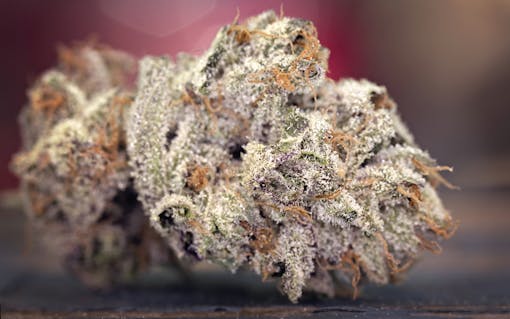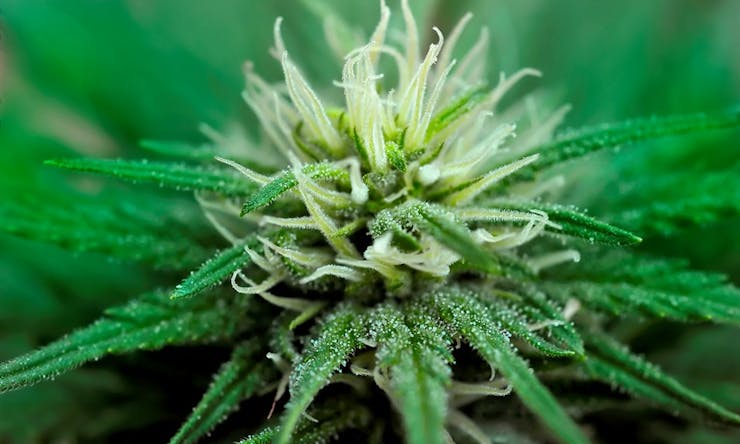For lovers of solventless cannabis extracts, most would agree that properly cleaned full melt hash is about as good as it gets. Sift of this quality looks like fine white sand, but upon closer review, little frothy orbs appear to look almost suspended in tiny cloud-like formations.
Under a microscope, thousands of tiny trichome heads appear perfectly separated from their capitate stalks, picked like fresh berries in a basket. A very small pinch can be as aromatic as a cologne, hitting your nose with a barrage of aromas.

This quality of sift is the end product of a painstakingly orchestrated series of procedures that first began with an expertly grown crop of cannabis. Techniques used to grow cannabis at this level necessitate one central underlying principle: farming and preserving trichomes.
Trichomes Production: From Grow to Harvest and Beyond

Trichome farming is more of a philosophy than a single practice. At its core, the concept can be dissolved down into two guiding principles: trichome proliferation and preservation. Together, they exist as a mantra for the production of the highest quality cannabis in the world. In every step of breeding, growing, harvesting, curing, extracting, and curing cannabis, trichome preservation and proliferation remain the two guiding forces for maximizing resin potential.
Trichome-Stacked Flowers Start with Genetics

Achieving trichome-stacked flowers is a journey that begins first and foremost with proper genetics. Certain cannabis genotypes will yield higher concentrations of trichomes than others. Selective breeding and acquisition of genetics that express high desirable yield ranges is the only way to build a solid foundation for proper trichome production.

When breeding sinsemilla cannabis for resin production, finding a stable mother to take cuttings from is key. Through asexual propagation, that mother can then be cloned and you can use the clones to grow plants that produce high-trichome yields.
Shop highly rated dispensaries near you
Showing you dispensaries nearGrow Habitat and Trichome Production

After genetics, the next most important thing to consider when aiming to maximize resin production is the grow habitat. Although a certain genotype may be predisposed to heavy trichome production, unless given adequate growing conditions, their potency may be lacking.
Quantity of trichomes does not necessarily equate to cannabinoid and terpene production within the trichome head. These factors are greatly impacted by environmental influences that take place during a plant’s bloom cycle. Of the plethora of environmental factors that come into play when growing cannabis, variables such as light spectrum, nutrient uptake, watering cycles, temperature, humidity, and airflow will all have a considerable impact on resin formation and cannabinoid production.
Avoid Contact with Trichomes and Flowering Cannabis Buds

Another very important consideration when farming trichomes is minimizing contact with the flowering buds. Trichomes are very sensitive and will burst on contact. Any physical interaction with cannabis flowers during the bloom phase will potentially compromise the integrity of the trichomes. If you must handle the colas, it’s very important to be as careful as possible. When harvesting, this same concept applies — any unnecessary agitation will cause a degradation in trichomes.
Heat and Trichome Production

Aside from physical interaction, heat is another major enemy to resin formation. When growing, keeping the temperatures as low as possible will help encourage production. It’s widely argued that in late stages of a cannabis plant’s bloom cycle, keeping temperatures low will trigger an increase in resin production. When harvesting, it’s also important to maintain a consistently cool temperature. Much progress can be lost if high levels of heat enters the equation at any stage in the growing, harvesting, and curing process.
An easy way to tell if heat if affecting your crop is to give them a good sniff. Disturbed trichome heads and those exposed to heat will give off pungent aromas. That delicious smell is nothing more than the degradation of trichomes as a result of heat and/or agitation of some kind.
Harvest Trichomes at the Right Time
.jpg?auto=compress%2Cformat&w=510&dpr=1)
There are handfuls of folk remedies and popular anecdotes floating around on the internet for how to maximizing resin production. Ranging from light deprivation to plant mutilation (cutting or pricking your plants to stress them out), these tips and tricks range in efficacy. The most important thing to consider when exposing your plant to unusual conditions is to constantly check for signs that they are healthy.
In the final stages of a plant’s bloom cycle, a crucial factor when preserving trichomes is to harvest at the right time. With the help of an inexpensive magnifying glass, you can identify the color of a trichome’s glandular dome to help determine the perfect time to harvest. When trichomes are clear and translucent, they are not ready yet and are still producing valuable cannabinoids. As they begin to lose opacity and turn milky white, this is an indication that your plants are almost ready to go.

For maximum resin production and potency, harvesting when trichomes have moved from milky white to an amber hue is key. Like fruits, trichomes are at their peak of flavor just before they turn. As the color moves into a predominately amber shade, this should be a strong indicator that the trichomes have reached the apex of their development cycle.
In every step of the growing process, there are opportunities to make decisions in favor of resin production. For those looking for potent, trichome-stacked flowers, adopting some of these techniques aimed at trichome farming is essential. The preservation and proliferation of trichomes is contingent on the respect they are given during the growing and harvesting process. Adopting the philosophy of trichome preservation is essential to maximizing resin production, potency, and preservation. For hash makers, trichome farming is the only way to achieve superior quality. Without these practices, products like full melt hash simple couldn’t exist.






